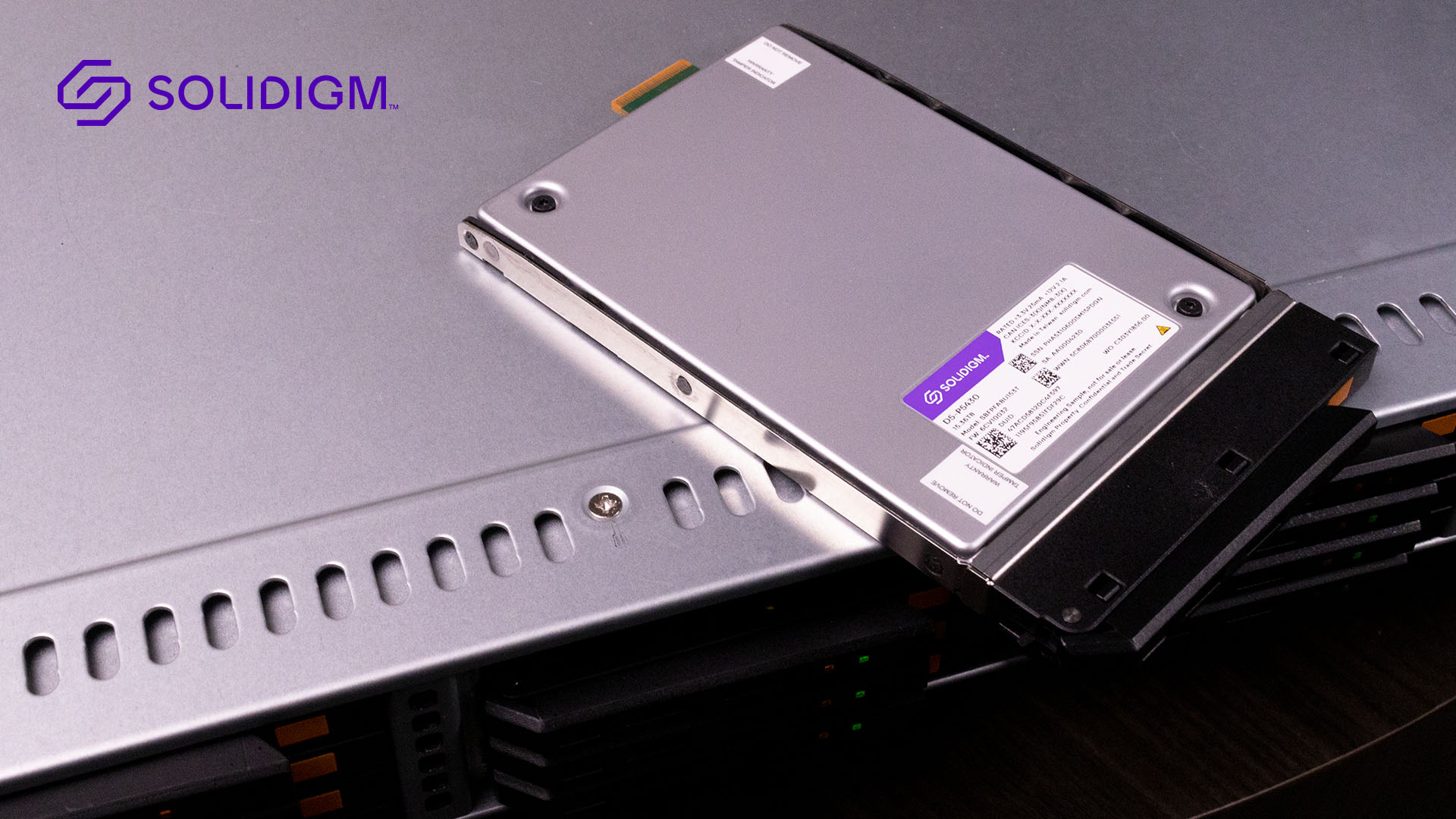
3D QLC NAND memory has apparent storage density and cost-per-GB advantages over 3D TLC NAND, but its performance and endurance were not particularly suitable for all kinds of applications, particularly in the data center space. But Solidigm believes that its controller and firmware innovations will make its QLC-based D5-P5430 SSDs solid contenders for mainstream and read-intensive datacenter applications due to their combination of capacity, performance, power consumption, and TLC-class endurance.
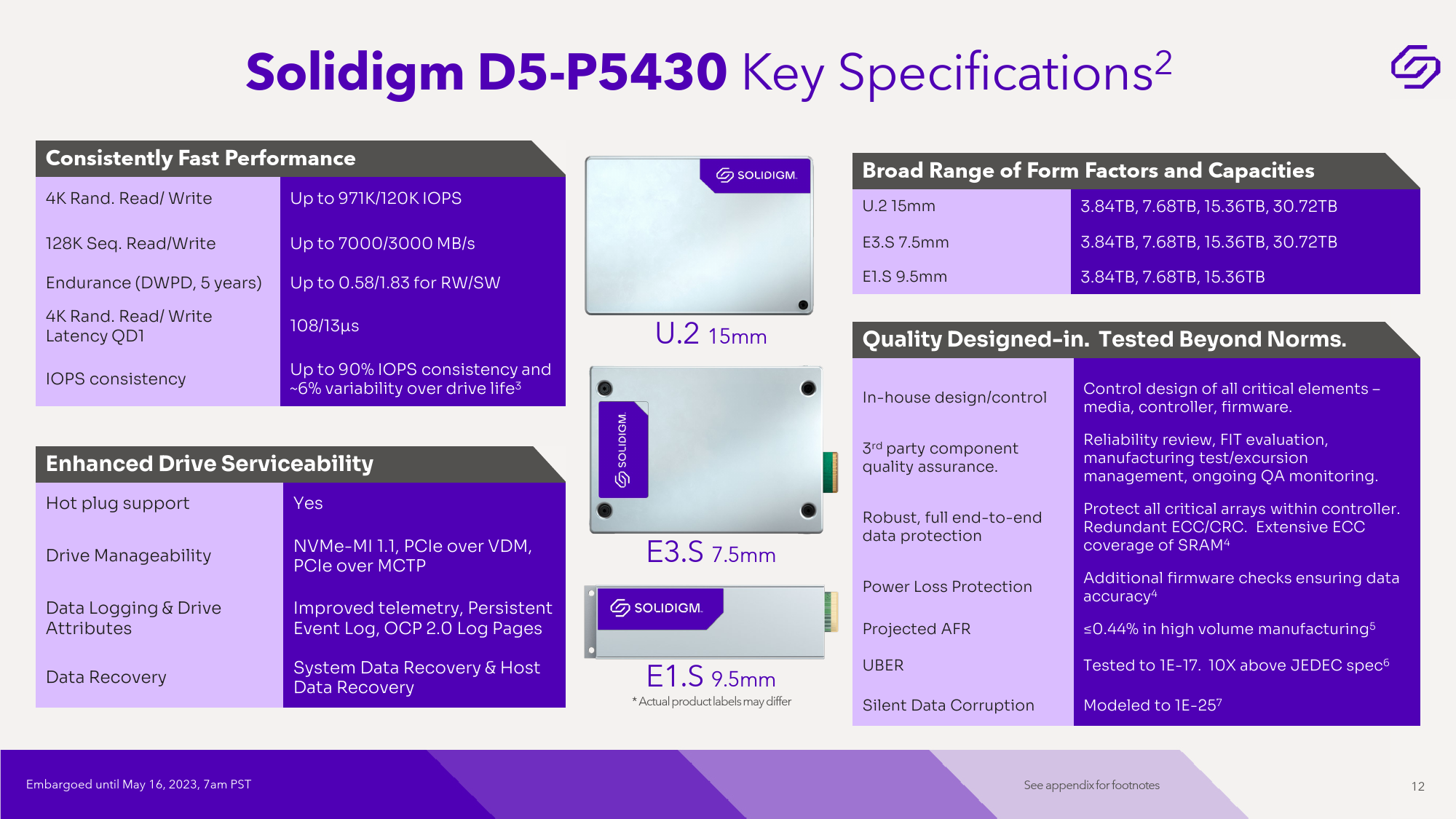
High Capacity, Massive Endurance
Solidigm's D5-P5430 drives rely on the company's NVMe 1.4c-compliant platform with a PCIe 4.0 x4 interface as well as 192-layer 3D QLC NAND memory.
When it comes to performance, Solidigm rates the new drives for up to 7,000/3,000 MB/s of sequential read/write speed as well as up to 971K/120K random read/write 4K IOPS, which is in line or slower than its direct predecessor (Intel's/Solidigm's D5-P5316 introduced in late 2021 that relied on 144-layer 3D QLC NAND), and which is substantially slower when compared to the write performance of 3D TLC NAND-based enterprise SSDs. For example, the new D5-P5430 SSDs feature significantly lower write speeds than Micron's 6500 ION SSDs.
Solidigm's D5-P5430 family consists of drives featuring 3.84TB, 7.68TB, 15.36TB, and 30.72TB capacity points that come in a 2.5-inch/15 mm U.2, E3.S 7.5 mm, and E1.S 9.5 mm form factor. Offering drives in different form factors enable Solidigm to address a wide range of applications and customers.
Solidigm positions its D5-P5430 SSDs for both read-intensive and mainstream workloads that consist of 80% reads (according to the company's own analysis), and the key selling point of these drives is that they enable high storage densities at 3D QLC NAND costs while offering read performance and reliability that is on par or higher than that of 3D TLC NAND-based drives. This positioning is slightly different than the 3D QLC-powered D5-P5316, and it is justified as the company has managed to significantly increase the endurance of its new 3D QLC drive.
Solidigm says that its new D5-P5430 SSDs can reduce the total cost of ownership by as much as 27% for a standard object storage system due to a 50% boost in storage density and an energy cost reduction of 18%. Moreover, compared to 'top-tier TLC SSDs,' Solidigm's latest drive promises to provide up to 14% more writes over its lifespan.
Based on the numbers published by Solidigm, the top-of-the-range D5-P5430 30.72TB can endure up to 32 PBW (petabytes written) over its lifespan, which is higher than its predecessor and even higher than Micron's 6500 ION 30.72TB drive that uses 3D TLC NAND memory. Solidigm hasn't disclosed how it increased the endurance of its drives, but one of the ways to do so is to increase the over-provisioning and implement innovative algorithms for the controller.
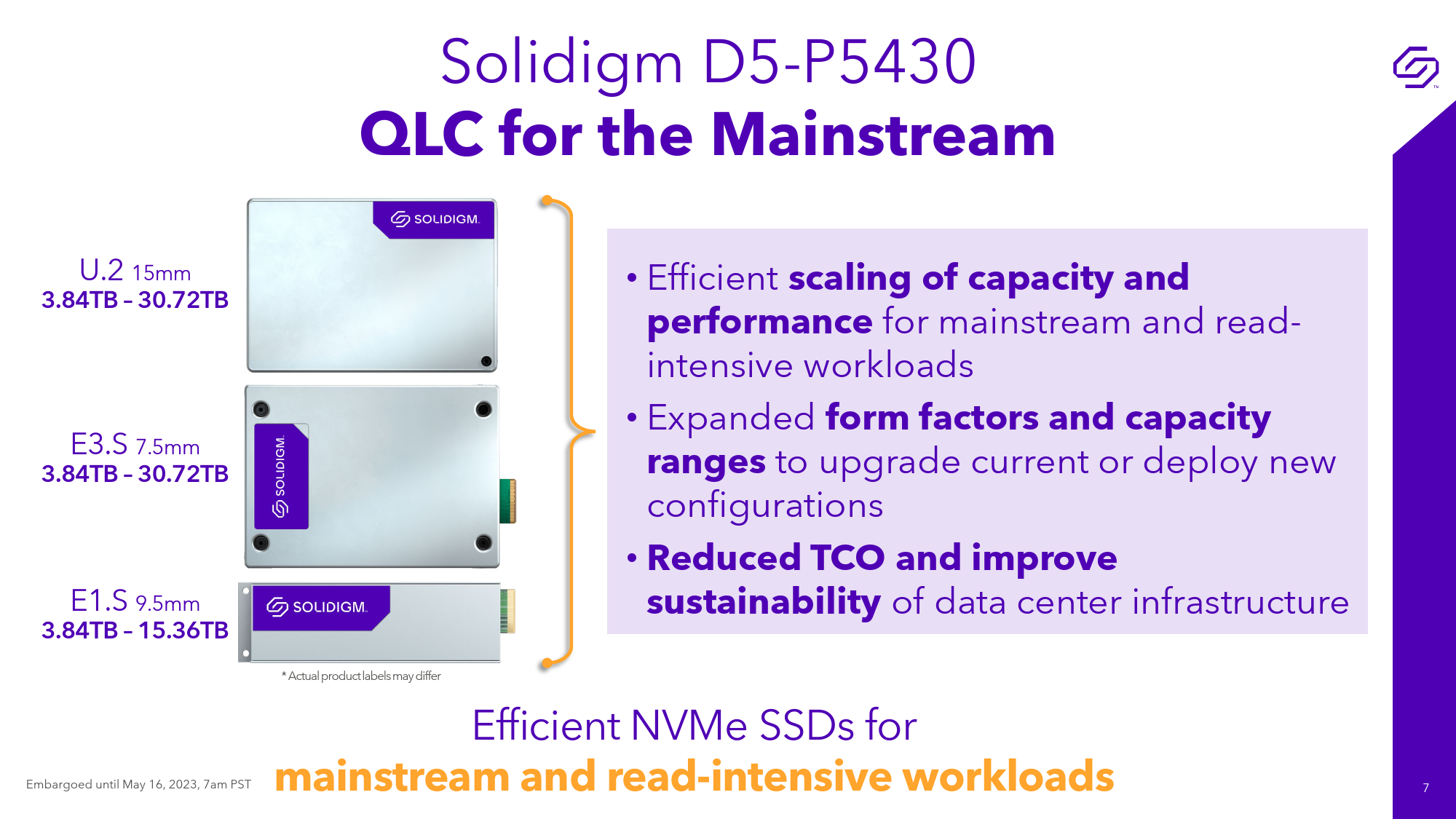
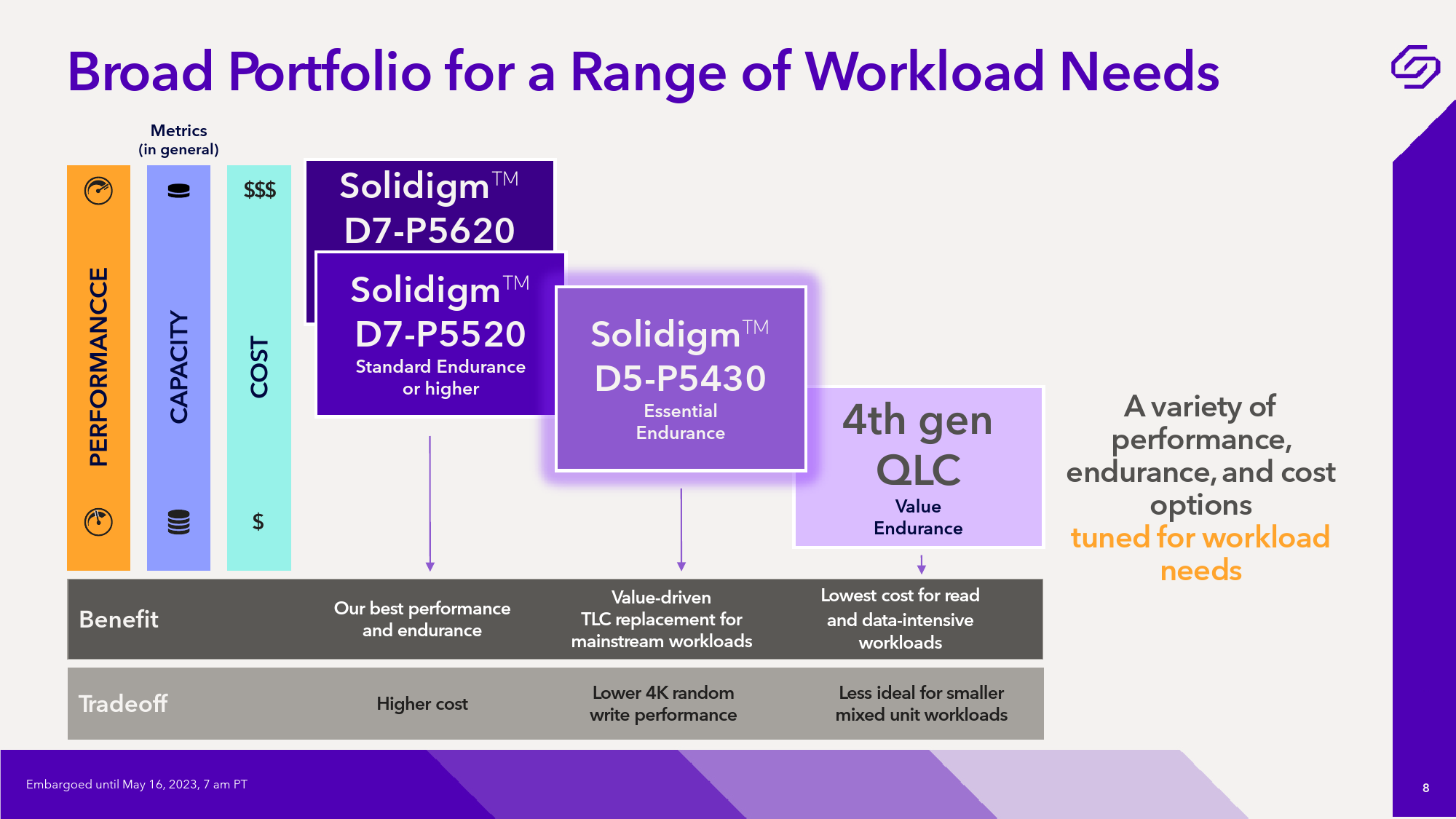
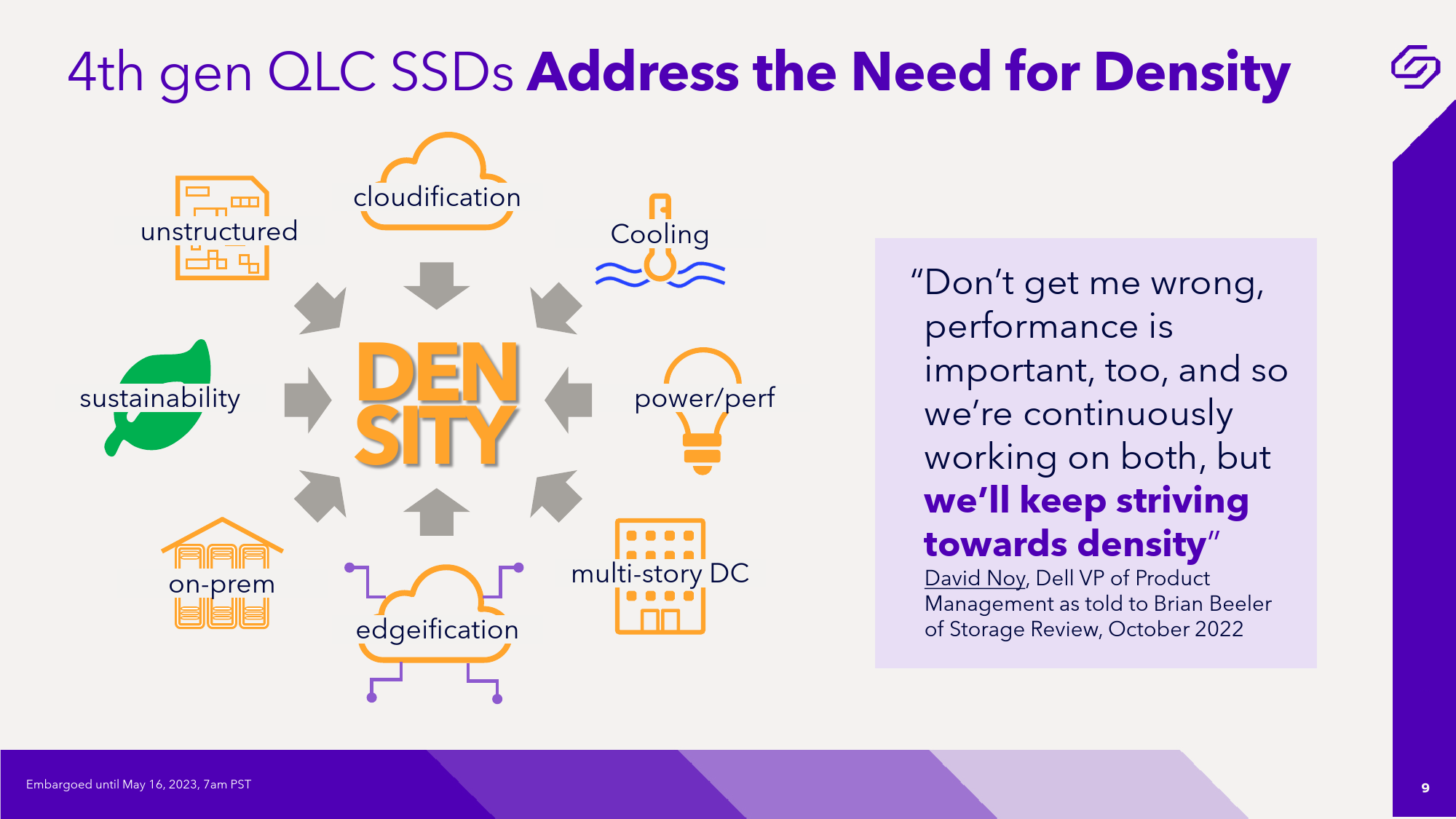
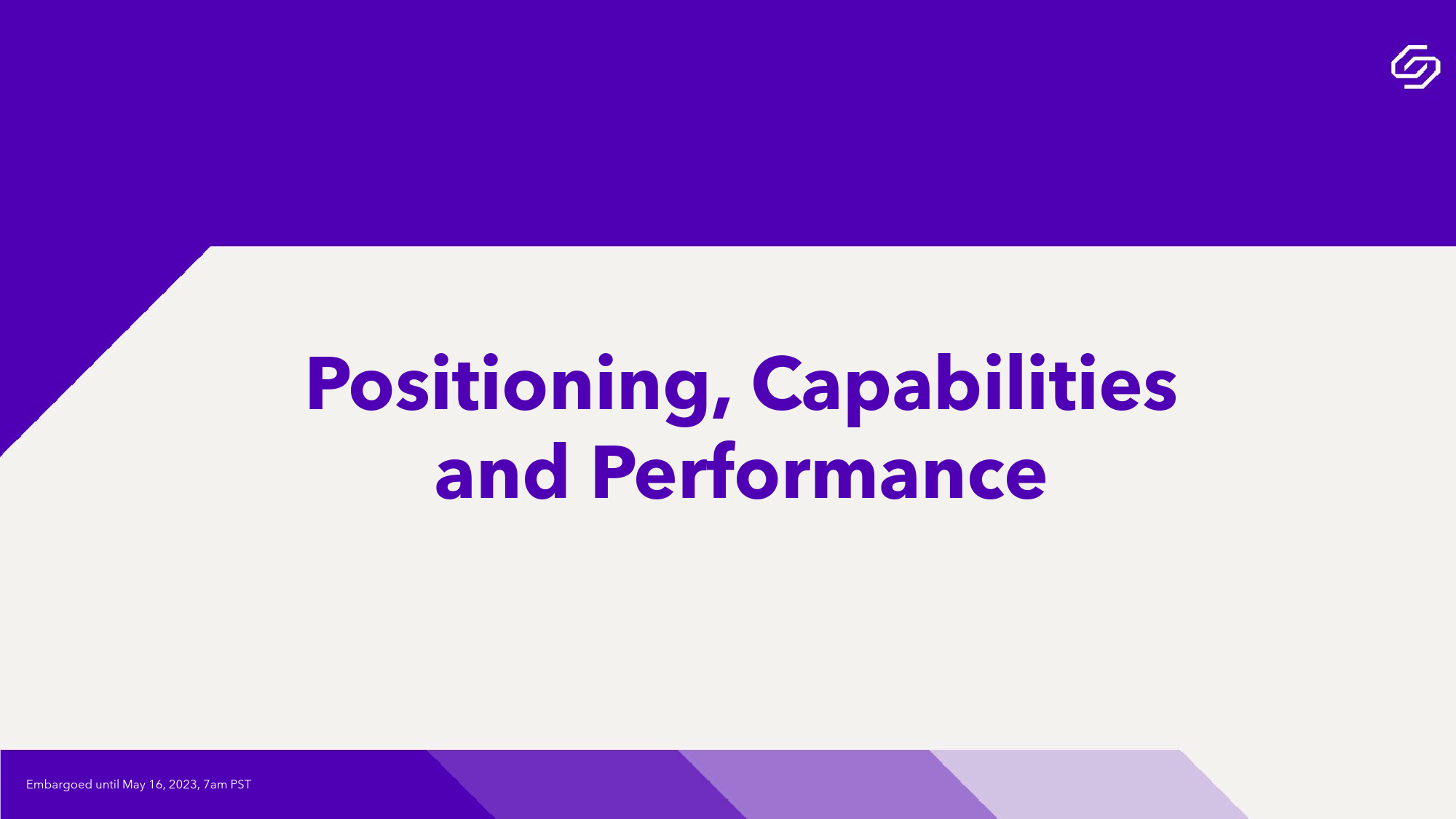
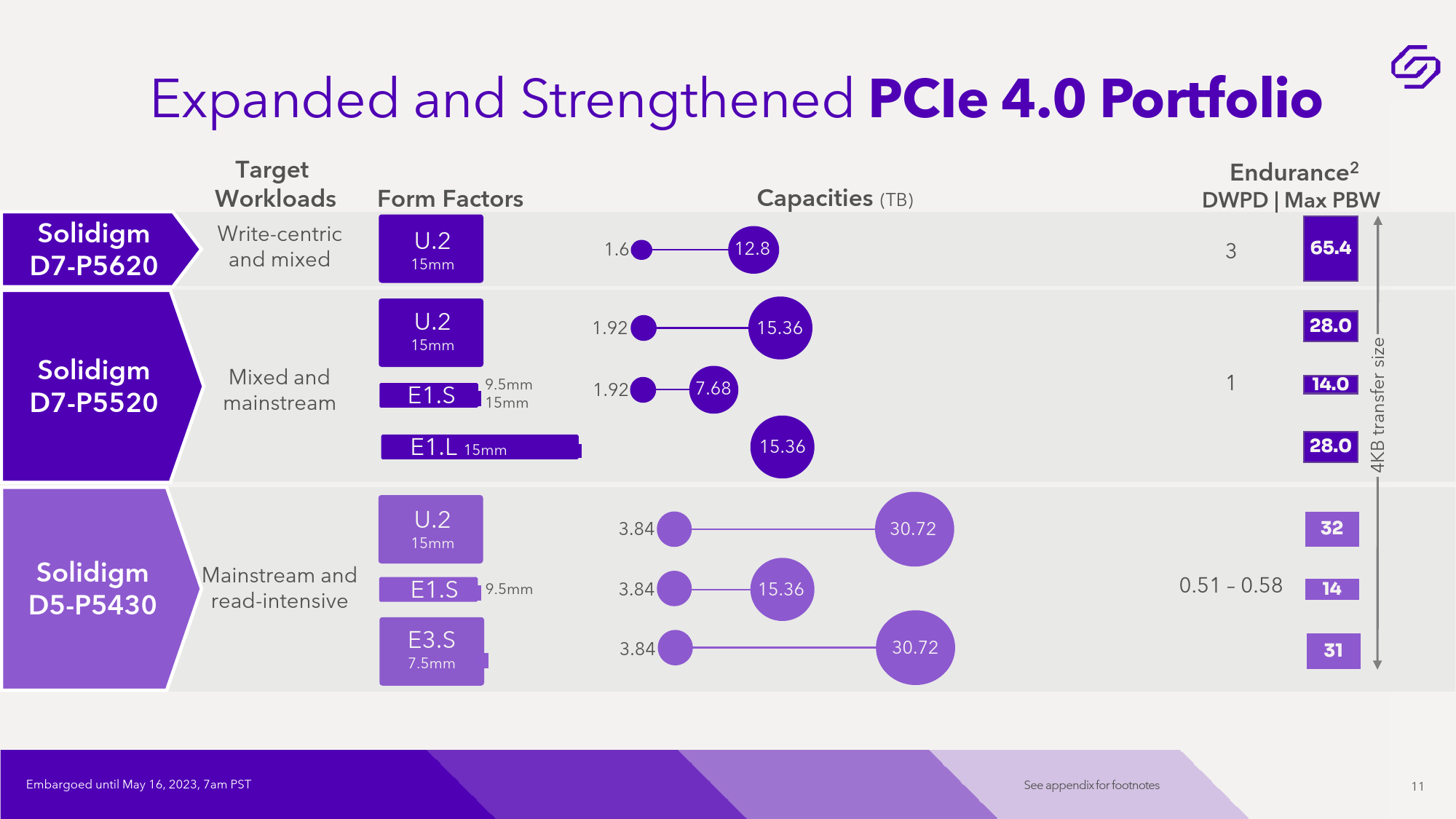

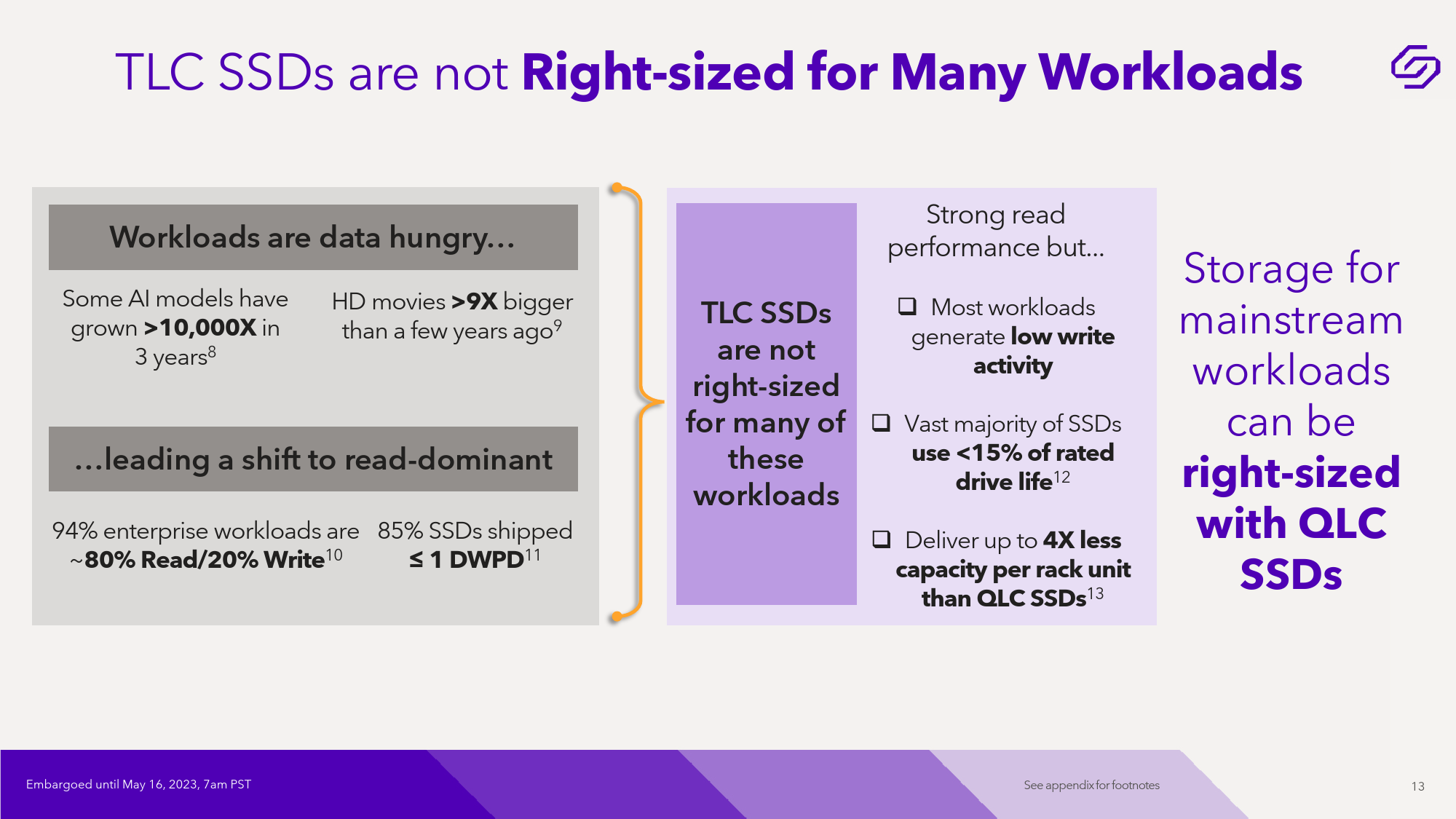
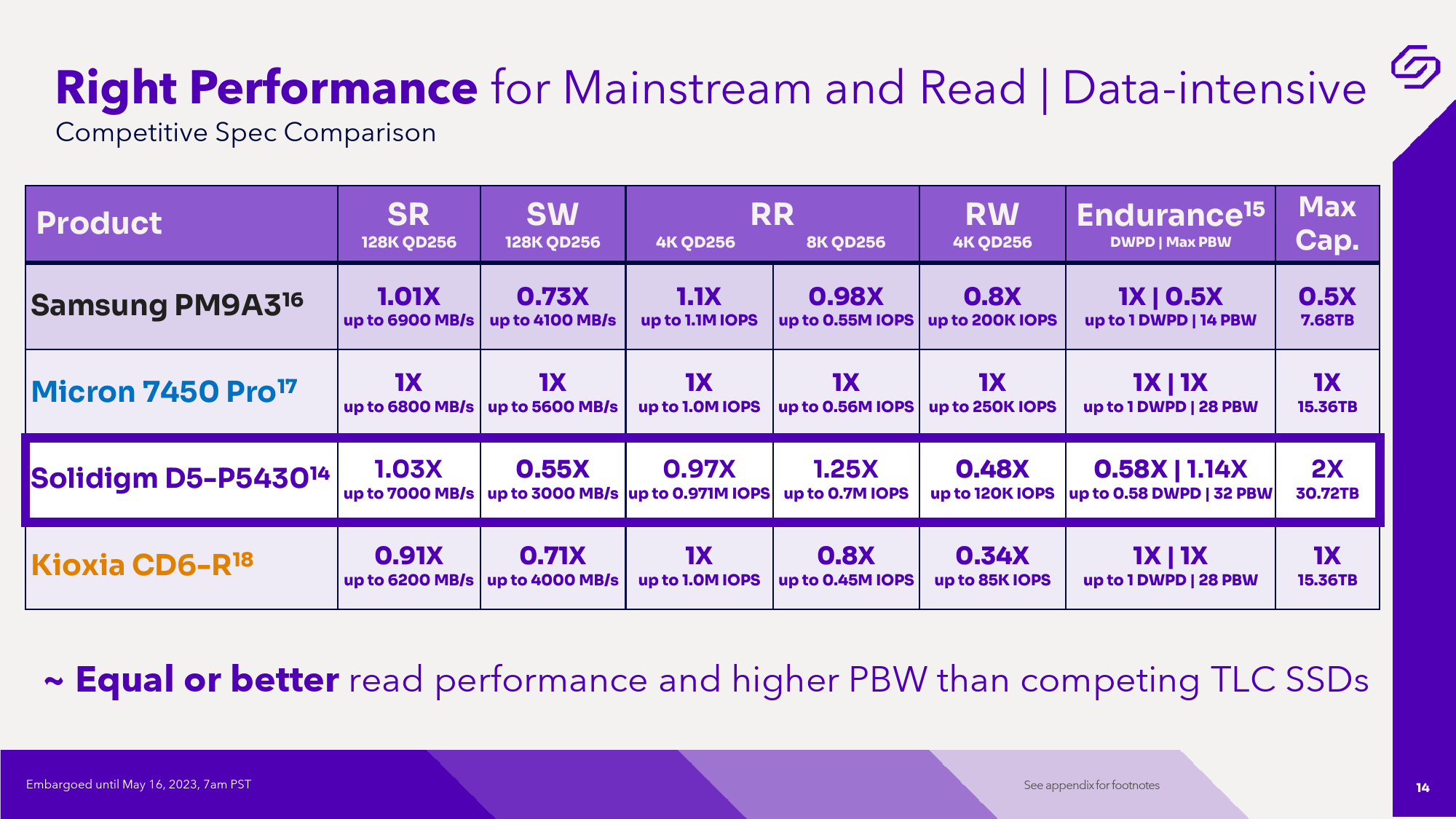
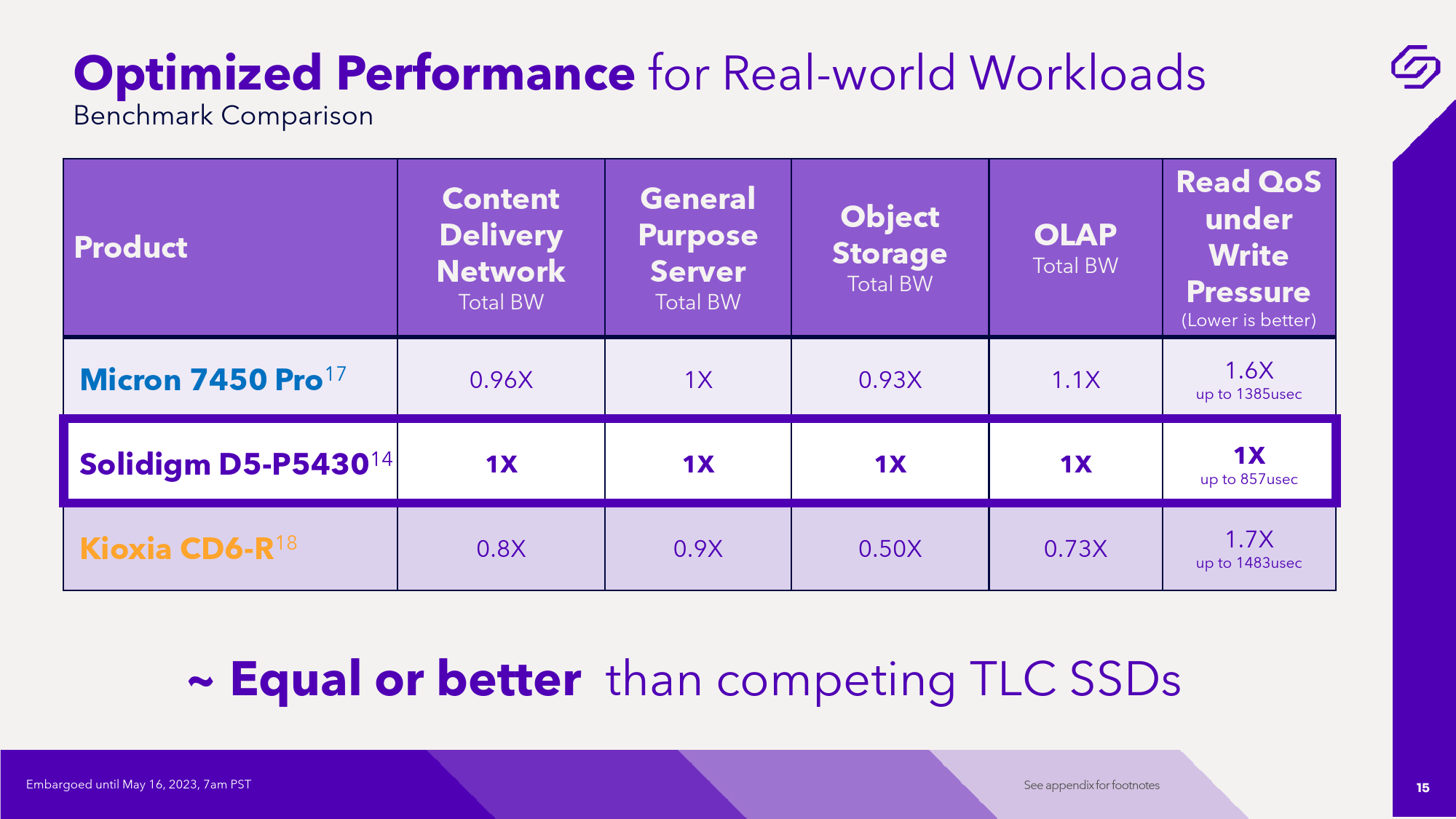
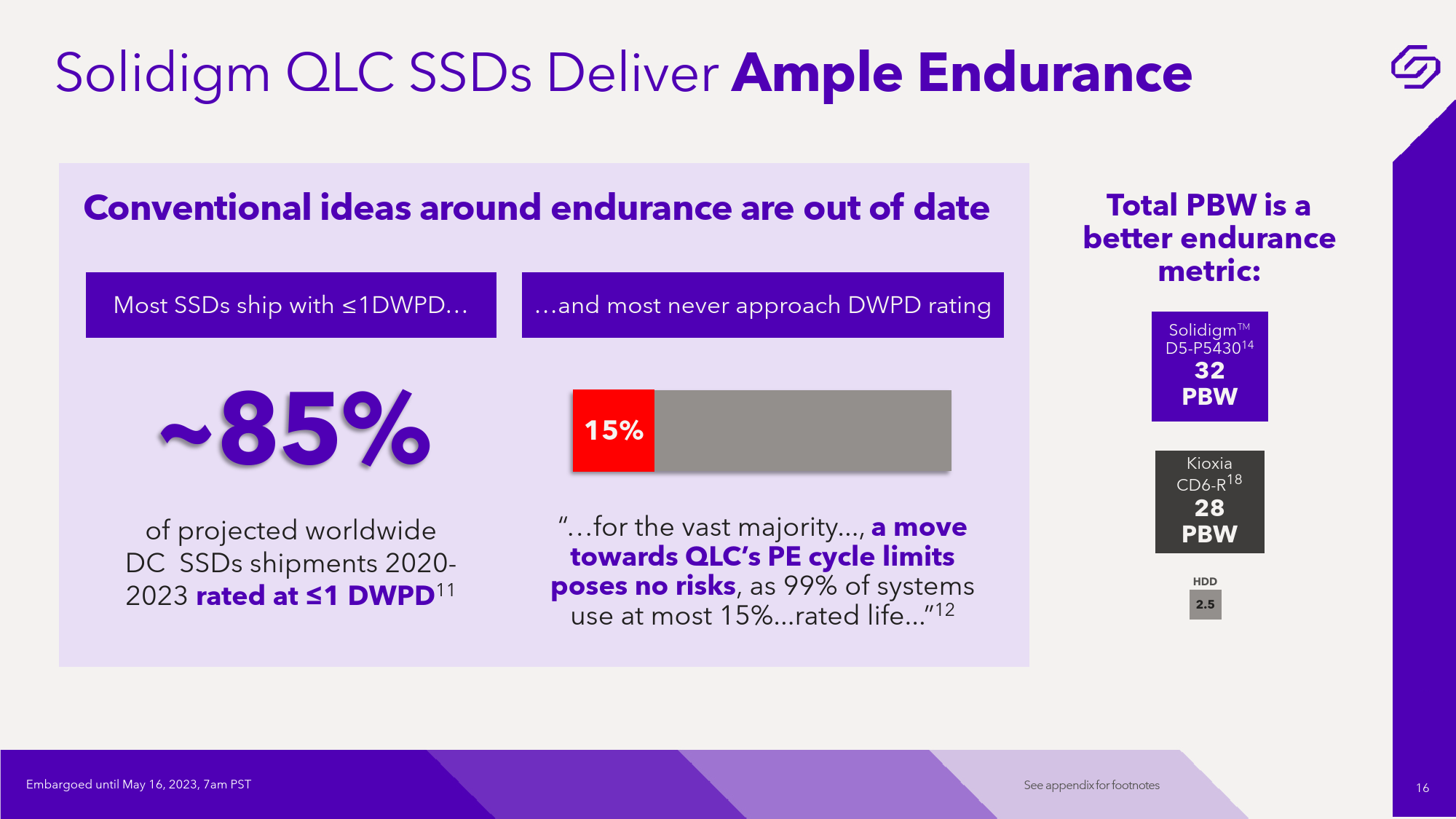
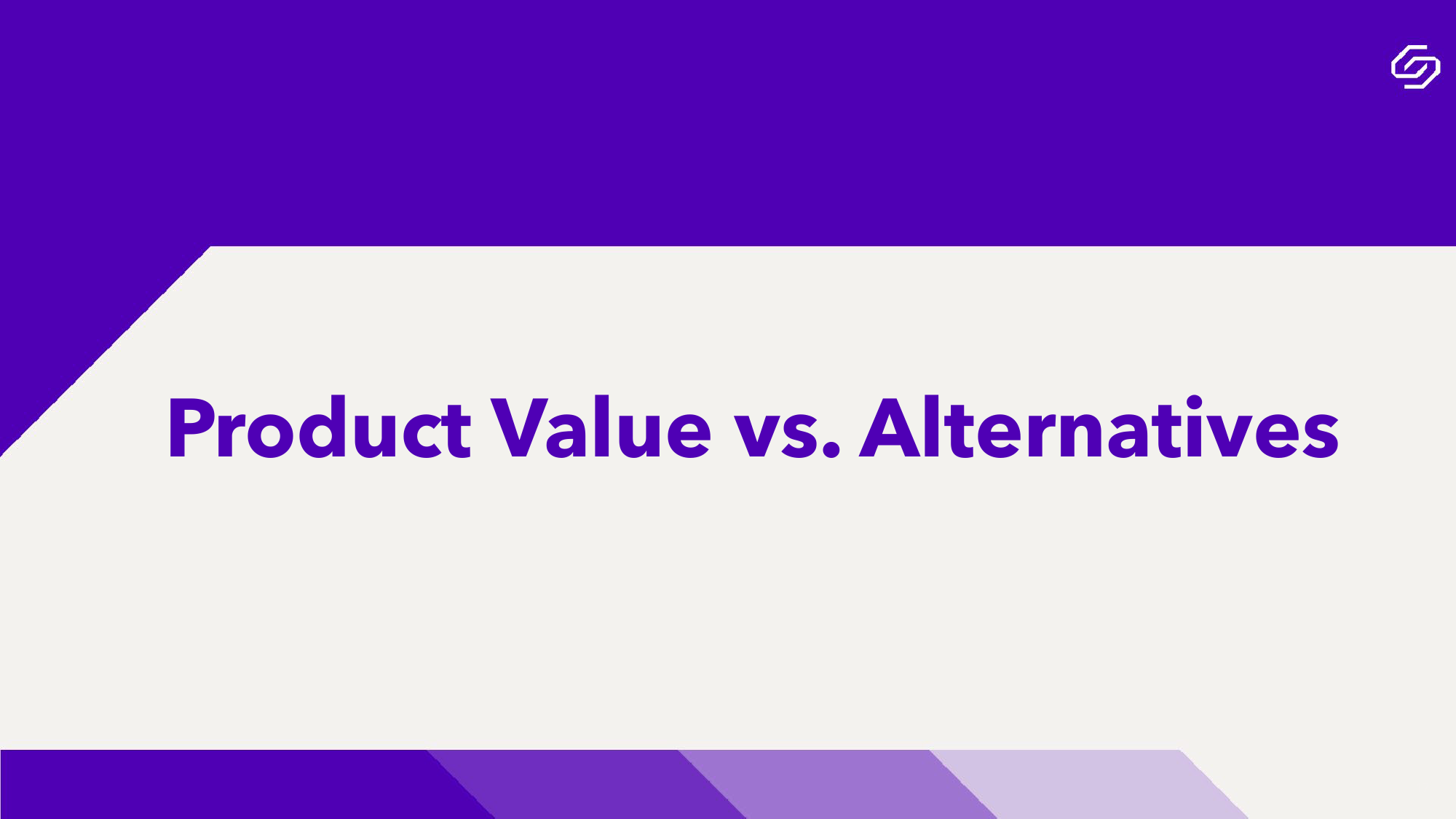
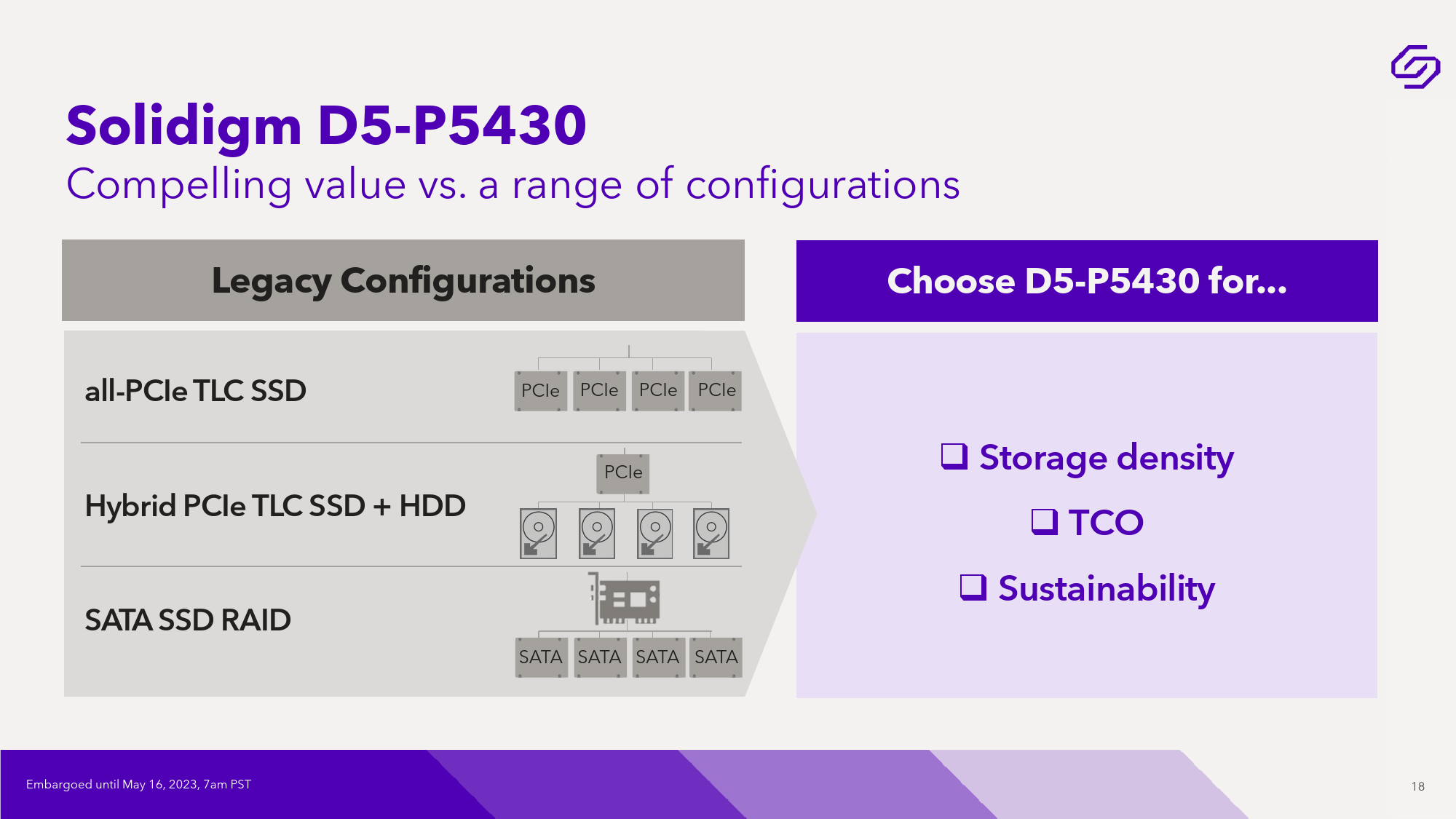
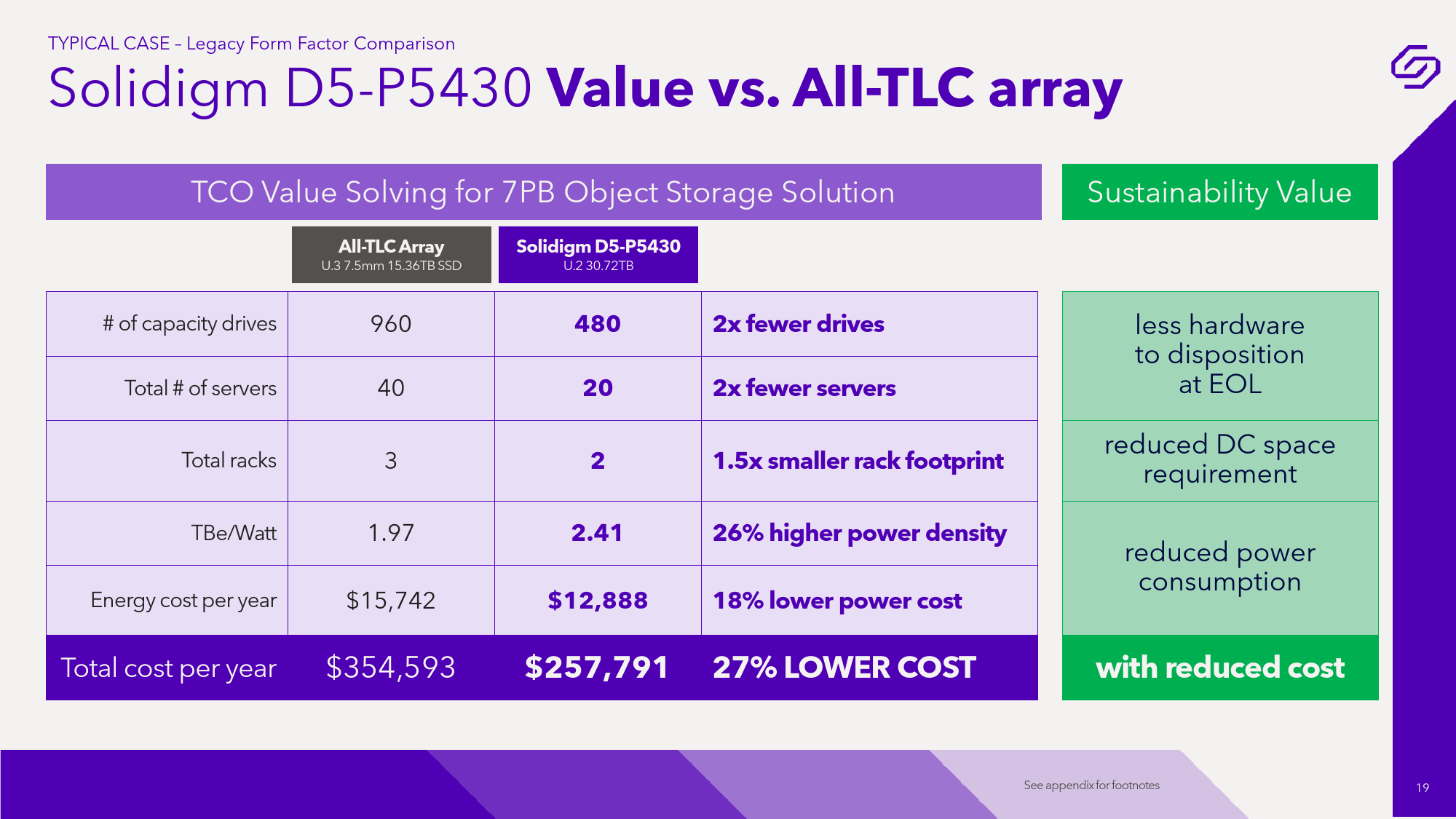
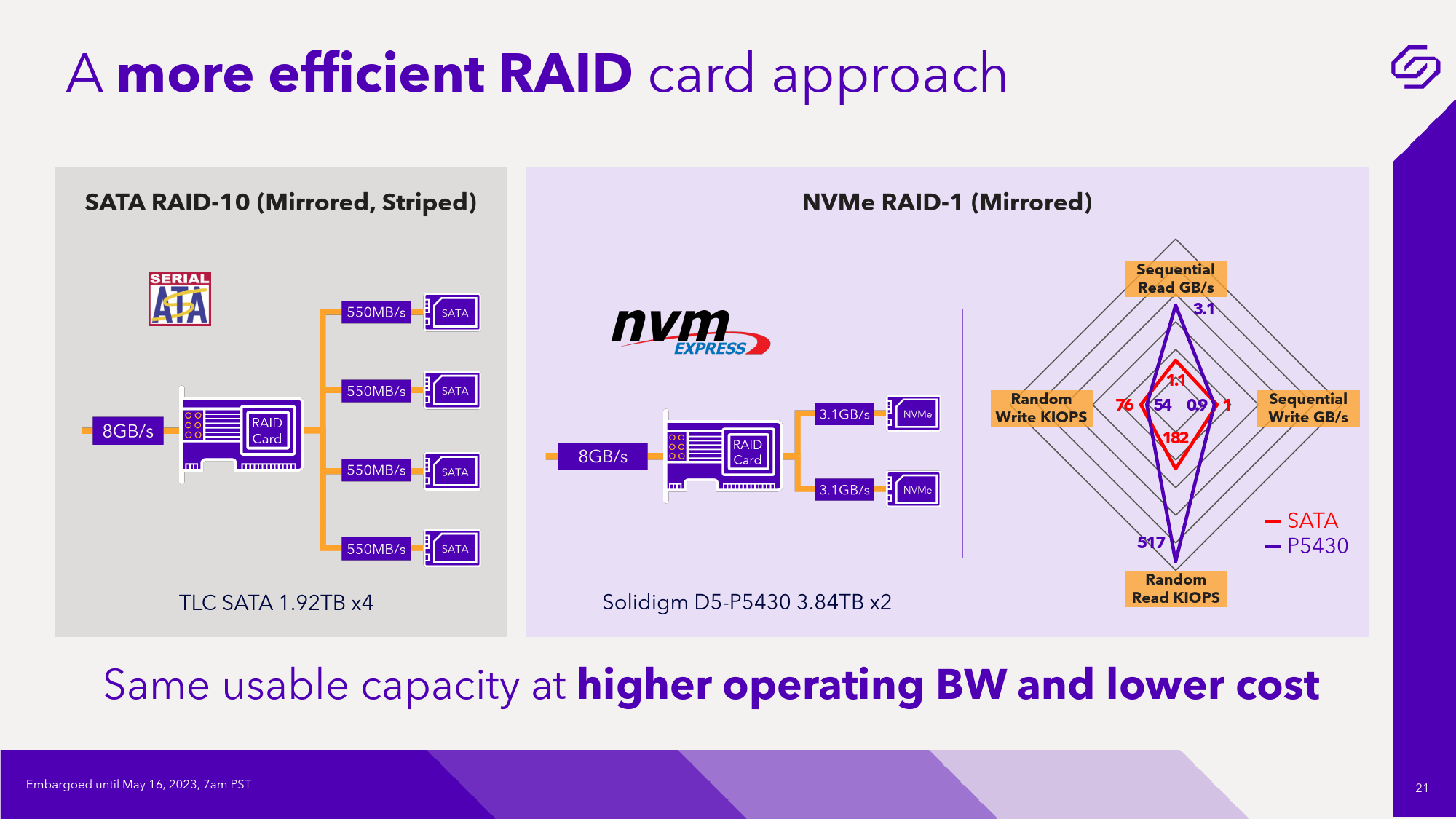
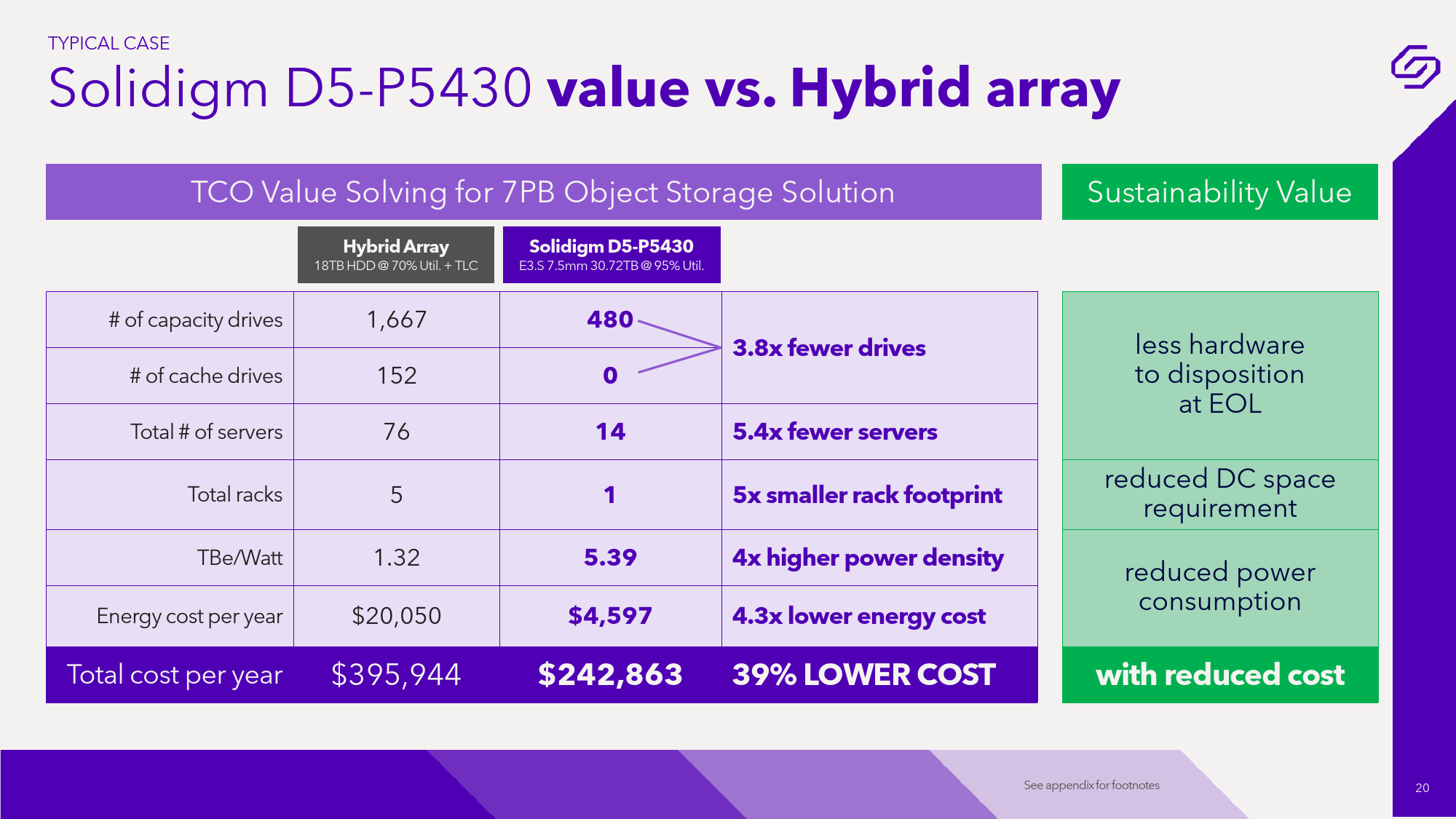
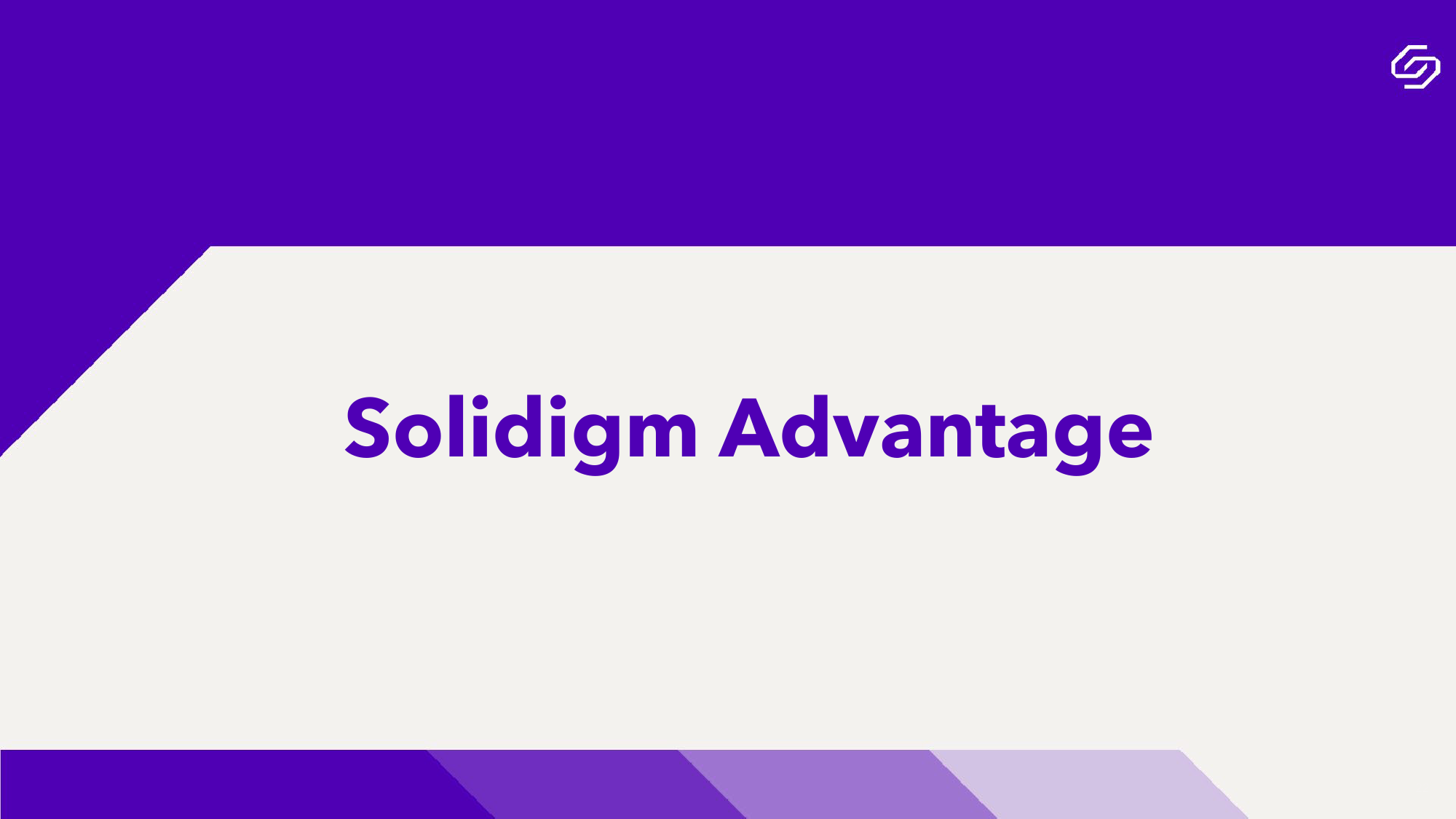
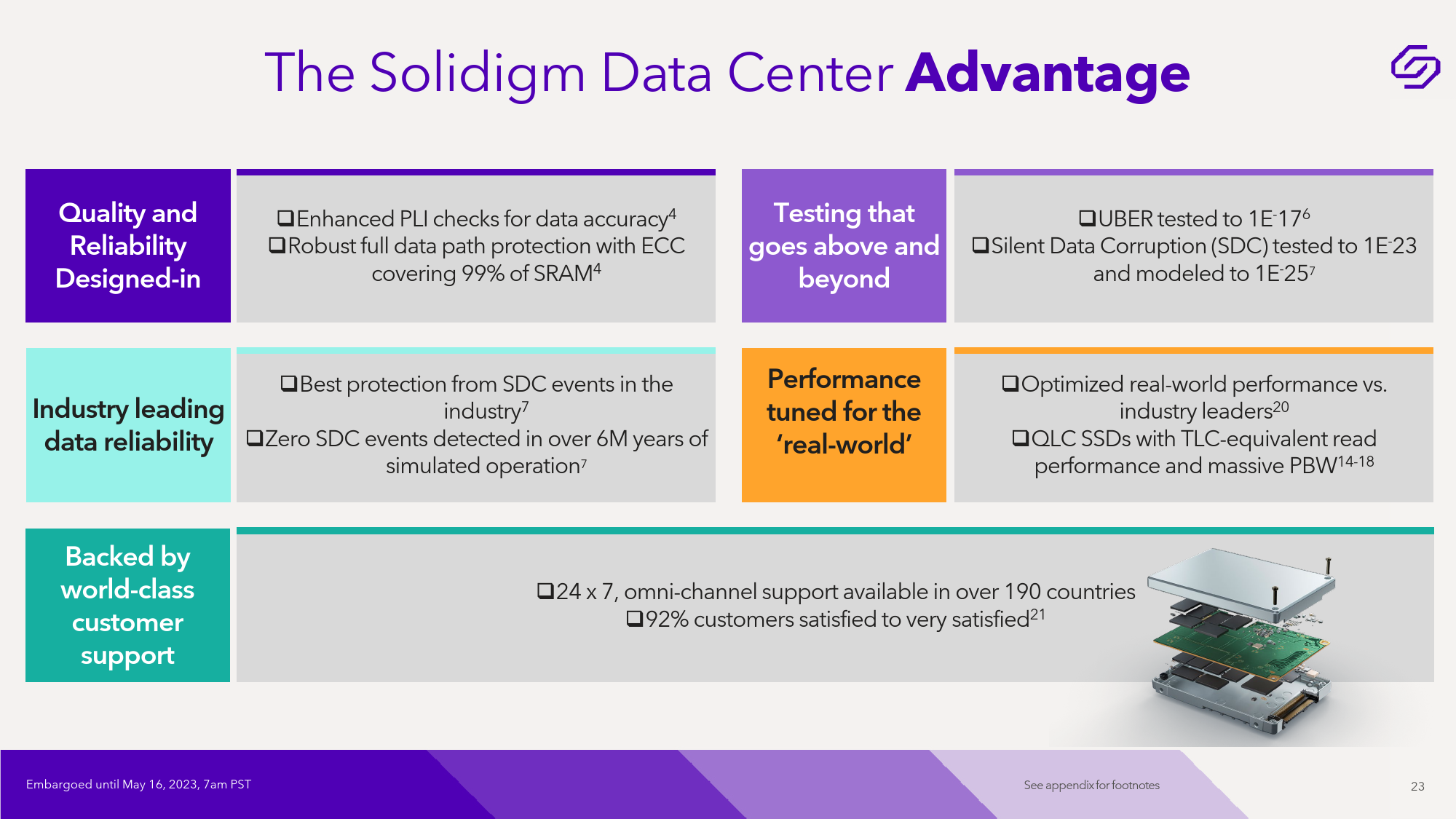
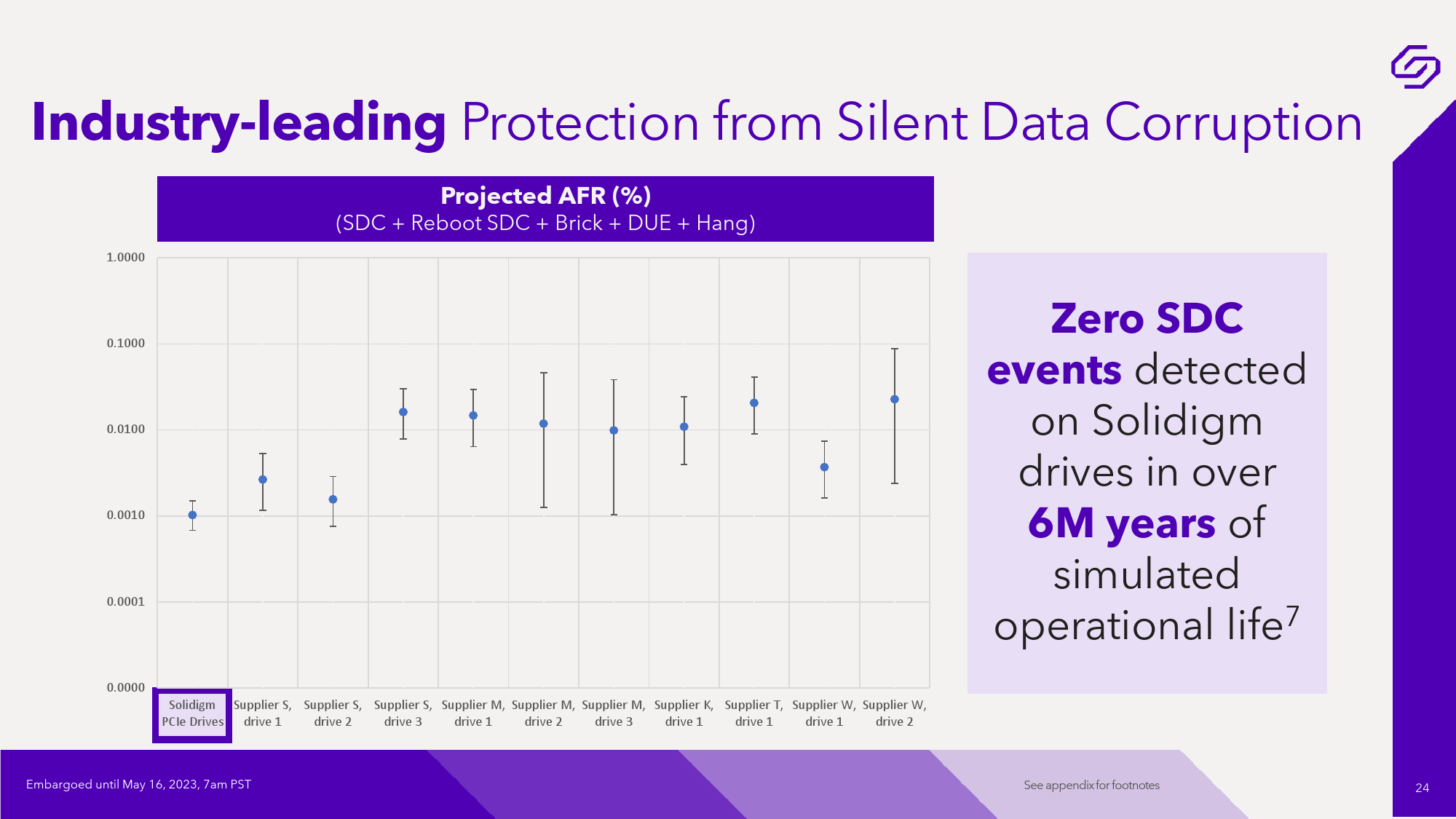
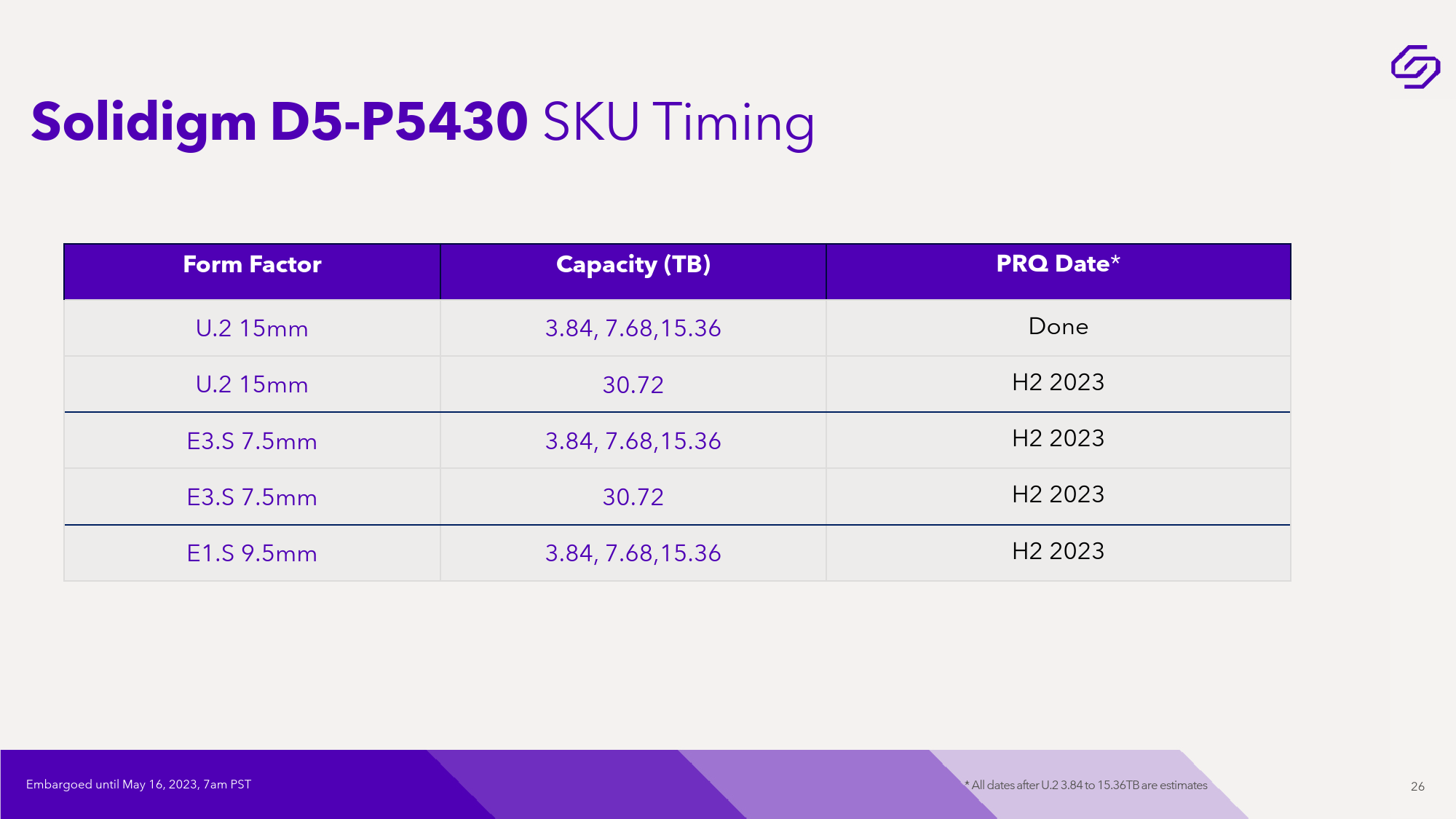

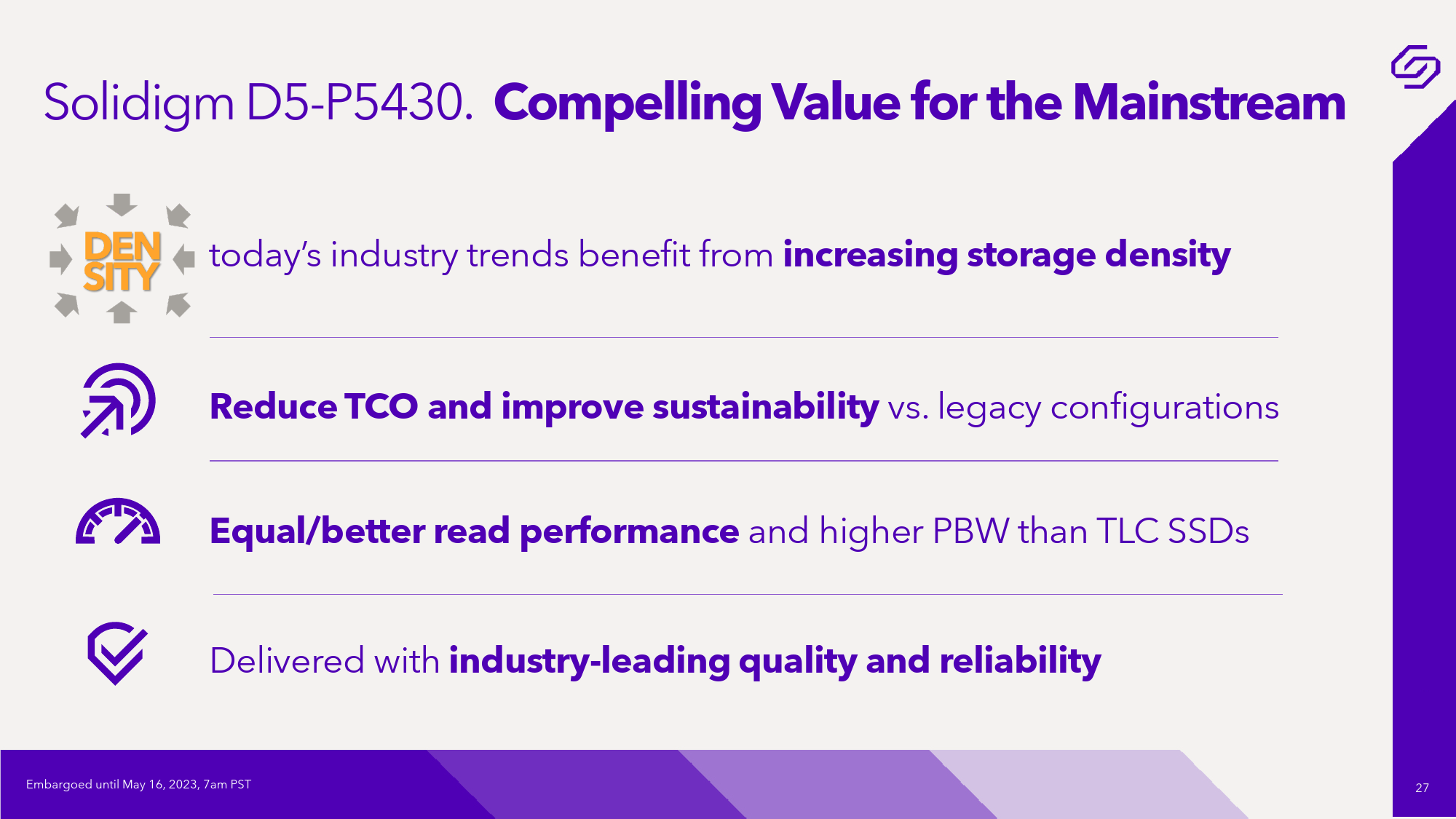

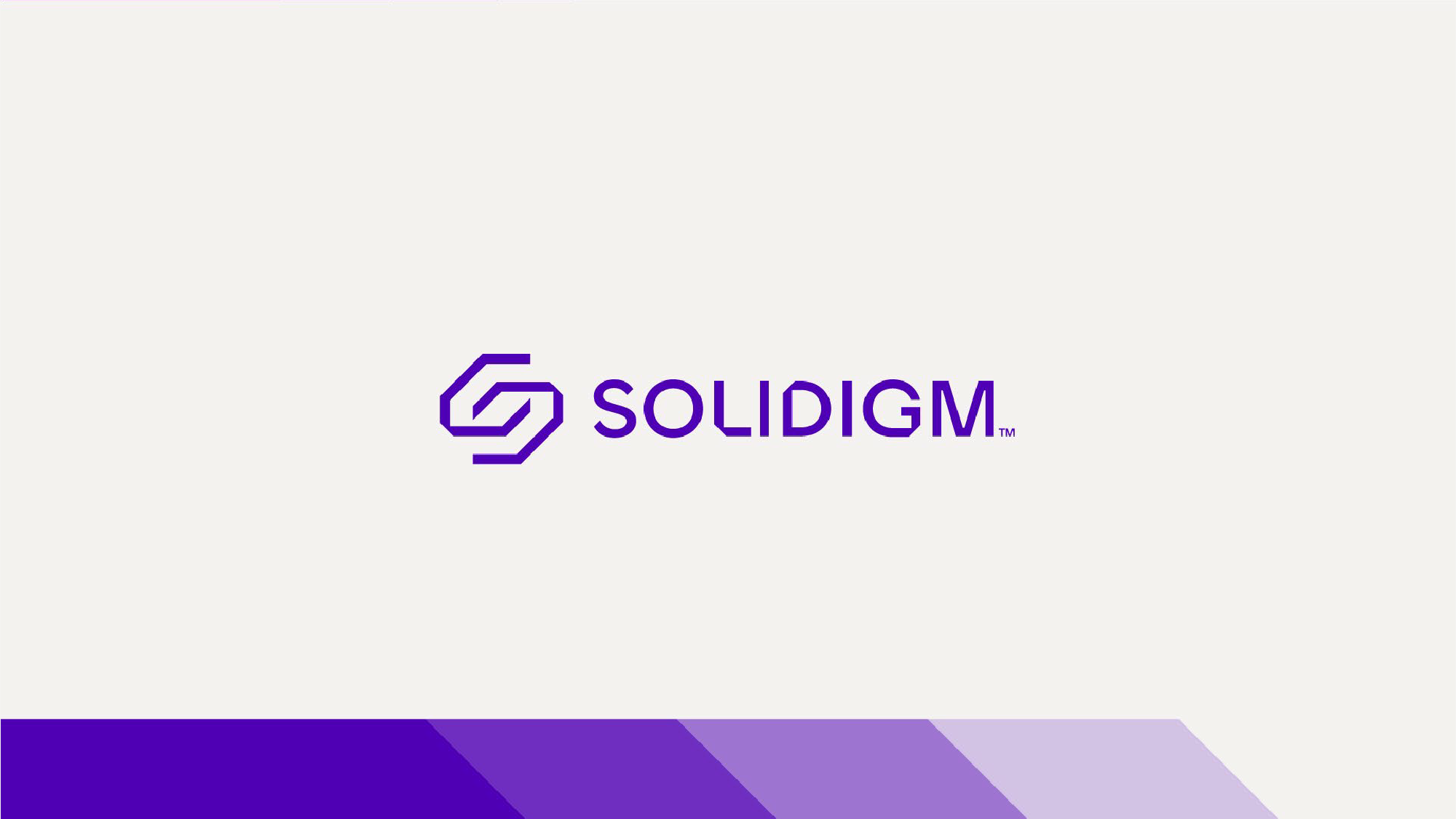
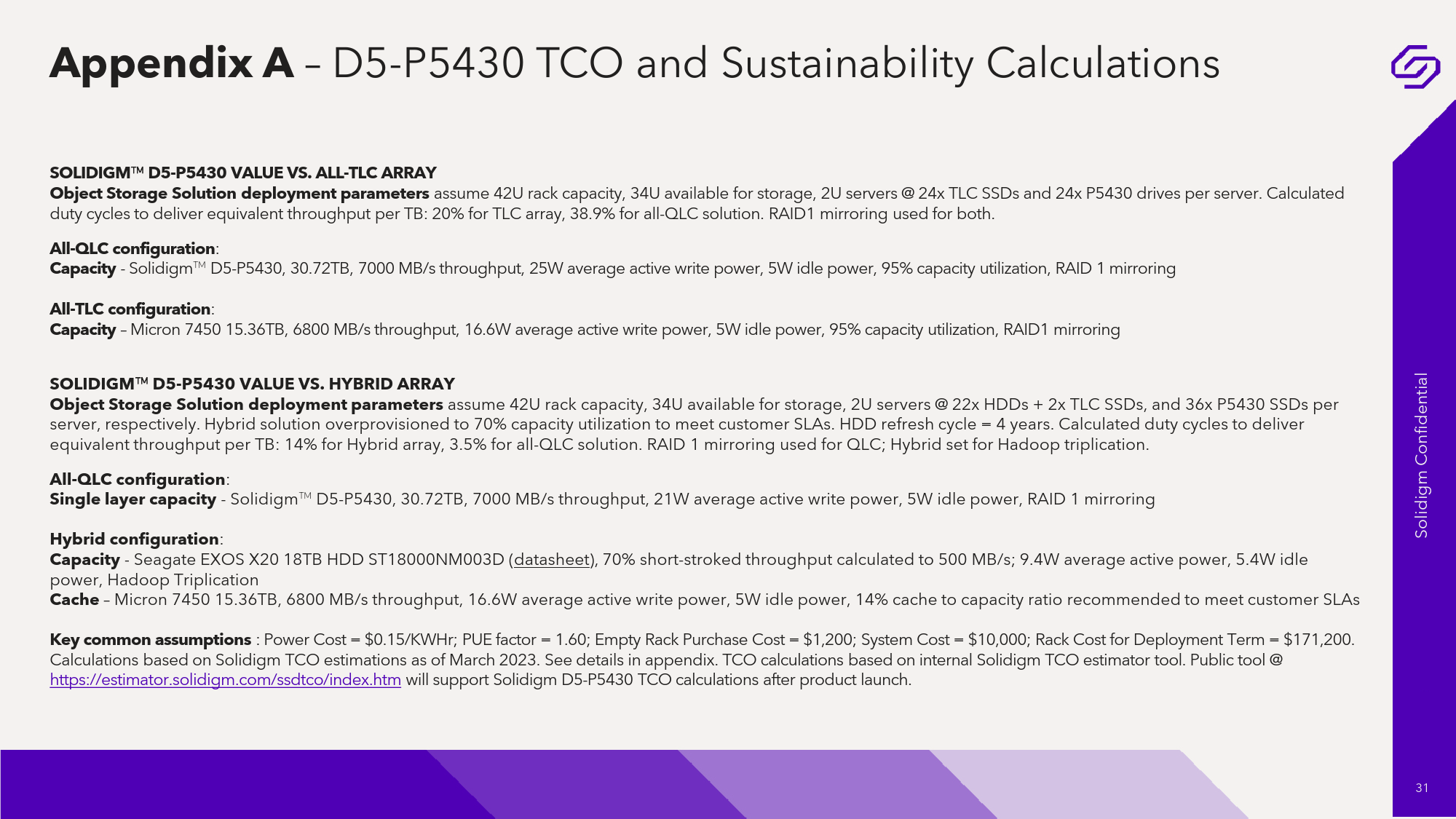
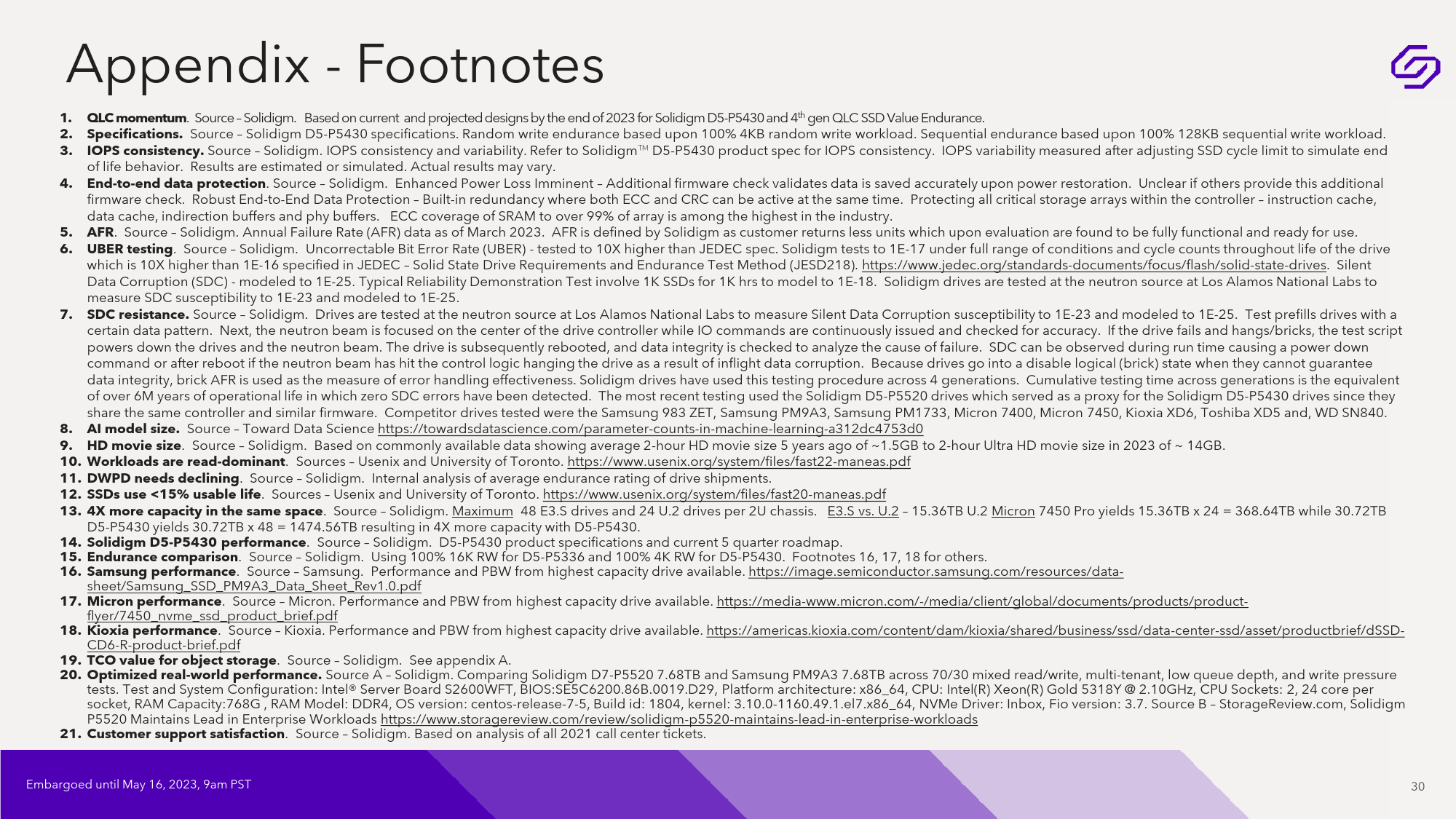
Availability
Solidigm has already shipped Product Release Qualification (PRQ) parts of its D5-P5430 SSDs in a U.2 form factor with 3.84TB, 7.68TB, and 15.36TB capacities, so its customers can order more parts now. The other D5-P5430 SKUs are set for the second half of the year.







